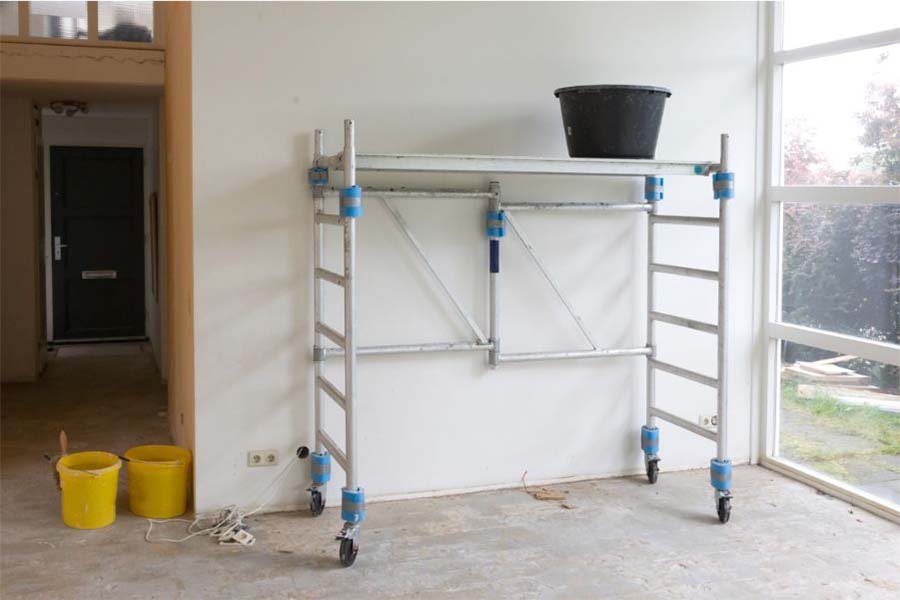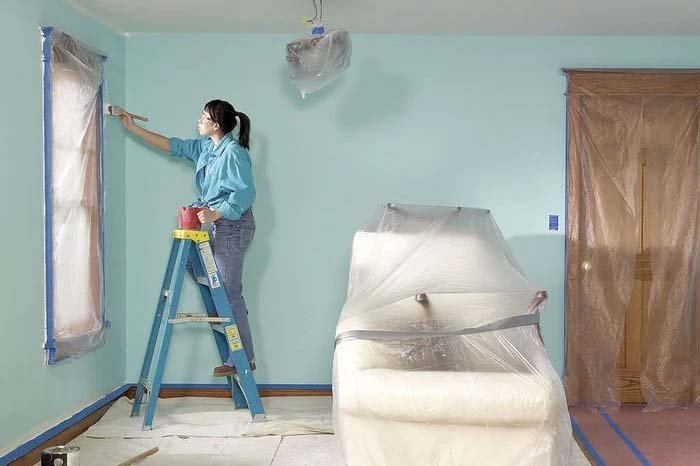5 Painting

Selecting Colour, Demolishing, Plastering and Painting
Paint and carpentry are usually done in the same time, starting from the on-site carpentry, and the painter will appear in the site from time to time until the completion of the project. This is because some woodworkers need to paint to fill the gaps of some wooden structure, and some installation works will inevitably scratch the paint and need to rework with painting
A complete wall and ceiling painting project, including demolishing the old paint, plastering, and painting. The demolish process is more flexible, and it is usually carried out in the initial stages. After completion, and the painting technician can start plastering and then painting. The house owner must confirm the color of the wall in advance before the painter starts working



In addition to walls and ceilings, brushing paint for wood is also the work of a painter. When carrying out the paint work, the painter will do the protection work first, so as not to add unnecessary color to other places
The 60-30-10 rule is any interior design fan’s best friend. No matter what your personal aesthetic may be or what you want your room to look like, you can use this rule to help make sure that your color palette stays balanced. In this setup, you’ll use three colors. 60, 30 and 10 refer to the percentages of your design that each will make up.Here’s how it works: first, you’ll choose one shade to be your dominant shade and take up approximately 60 percent of the room. Usually, this will be a neutral or some type of subdued hue that can take up a lot of space without feeling overwhelming. Next will be your secondary color, which is typically a bit bolder and takes up about 30 percent of the space. Finally, your accent color is your boldest shade and should make up the remaining 10 percent.
What is the important step on painting the house
Selecting colour with a professional interior designer is most important. Colours can help to create an illusion of a bigger or a smaller room. If the room is small and the amount of natural light is limited, light colours are the way to go. If the room is large, darker colours will create a cosy, comfortable environment.
How do interior designers choose colors?
- Find Paint Color Inspiration.
- Use Color Theory to Create a Color Scheme.
- Get Creative With Neutral Paint Colors.
- Pull Your Paint Color From a Print.
- Look Outside for Ideas.
- Find Your Paint Color in Artwork.
- Look to Historical Color Inspiration.
- Try a Lighter or Darker Shade.
Is it complicated to use colors in designing the interiors?
Color is often the most difficult part of a room for interior design fans to get right. That's because colors are fickle. There are so many shades to choose from and they need to be put together in the right proportions. Otherwise, they won't work together in harmony.
How to Choose a Color Scheme
- Prioritize the user experience, first. Leverage natural inspiration.
- Set a mood for your color scheme.
- Consider color context.
- Refer to your color wheel.
- Use the 60-30-10 rule.
- Draft multiple designs.
How many colors should be in a room when decorating?
How many colors should you use in a room? According to the 60-30-10 rule, you should only use three colors in any room – although you can successfully incorporate many different tones of these three colors.
Our Services
Need Any Help?




